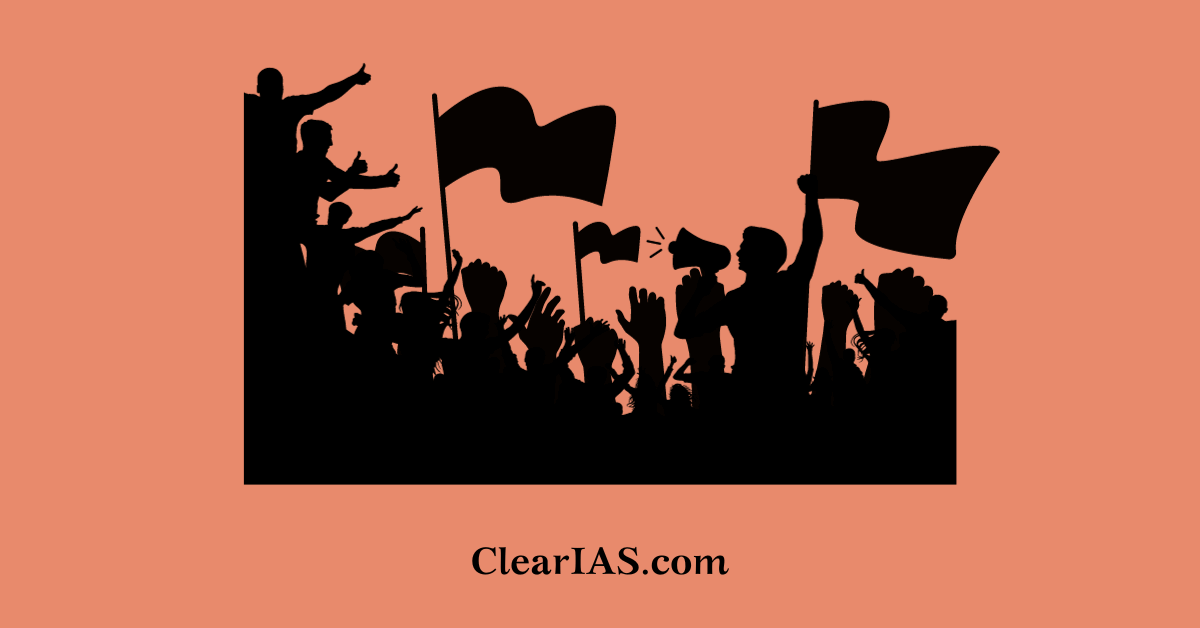
Iranian Revolution, also known as the Islamic Revolution, is a momentous development in the modern history of Islam. It has direct connections with the present-day conflicts between the Western and Islamic Civilizations. The rise of many Jihadi Movements is also inter-linked.
February 2019 marks the 40th anniversary of the Iranian Revolution.
Islamic Republic – What is it?
Most of the Islamic states are ruled by monarchies – where the rule is hereditary. Examples – Kuwait, Saudi Arabia, UAE etc. However, a few of the Islamic states like Iran are Islamic Republics.
If a country is Republic, the head of the state will be an elected one. Unlike Secular Republics where the state does not have any religion, Islamic Republic countries follow Islamic laws. Examples of Islamic Republics are Pakistan, Afganistan, Iran, and Mauritania.
What was the Iranian Revolution for?
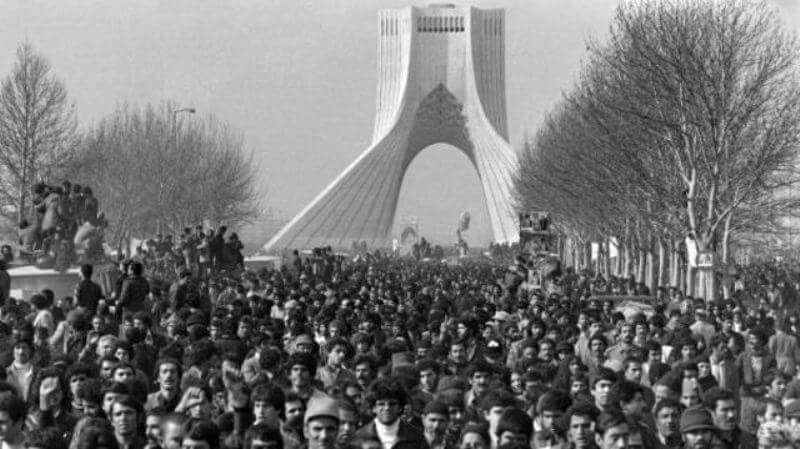
Even though Iran (Persia) enjoyed periods of economic prosperity under Shah’s rule, domestically, the regime was kind of a dictatorship. Besides, many fundamentalists were against the ruler’s ambitious modernisation programme that redistributed land and pushed for social reforms in the 1960s. Many felt the King’s initiatives undermined Iran’s Shia traditions and served only foreign interests.
The economic collapse of Iran in 1977 which caused high unemployment and rising inflation became a triggering factor to overthrow the monarchy and the western interests.
Why the Iranian Revolution is different?
Iranian Revolution 1979 may be the least talked about revolutions, unlike Russian or French Revolutions – probably because the Iranian Revolution had not contributed to an intellectual or ideological legacy like other Revolutions.
Iranian Revolution was relatively a non-violent revolution. The movement saw the end of 2,500 years of Persian monarchy.
The western intelligentsia treated this Revolution merely as a religious upheaval. However, thinkers like Michel Foucault declared the Iranian revolution as the ‘spirit of a world without spirit’ and as the “first great insurrection against global systems“.
The Iranian Revolution lacked many of the customary causes of revolution (defeat at war, a financial crisis, peasant rebellion, or disgruntled military). It occurred in a nation that was experiencing relative prosperity.
However, the revolution produced profound changes at great speed.
It replaced a pro-Western authoritarian monarchy with an anti-Western totalitarian theocracy based on the concept of Guardianship of the Islamic Jurists (or velayat-e faqih).
Also, the revolution resulted in the exile of many Iranians.
Iranian Revolution – First Great Insurrection Against Global Systems
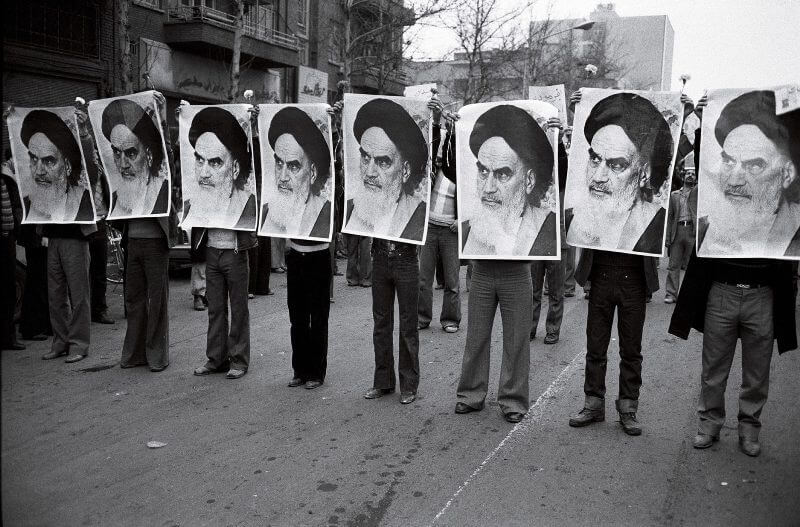
The revolution opened a new chapter for political Islam in the late 20th and early 21st centuries and had a deep impact on revolutionary movements across the globe, especially those that were using the Islamic frame of reference for political activism.
Iranian Revolution had led to fundamental geopolitical shifts in the Middle Eastern region. Examples – USSR invasion of Afghan, cold war between Saudi and Iran etc. Its repercussions are still felt throughout the region.
As the Revolution enters its 40th year in 2019, we will look at some of the significance and effects of it on Iran as well as on the regional and global politics. Even the ripples of this effect have and had been felt on India-Iran relations.
History
Iran (also known as Persia) has a rich history. It was also home to one of the world’s oldest civilizations. In this post, we shall, however, focus our study to the history of the Islamic revolution; in two heads – prelude and the actual revolution.
Prelude to revolution
- The 1979 Revolution had its roots in Iran’s long history.
- Historically the Shi’a clergy (Ulema) had a significant influence on Iranian society. However, the society had many different social groups including clergy, landowners, intellectuals, and merchants.
- These social groups earlier came together in 1905-11 Constitutional Revolution. But those efforts were stifled amid reemerging social tensions as well as foreign intervention from Russia, the United Kingdom, and, later, the United States.
- Insecurity and chaos created after the Constitutional Revolution led to the rise of General Reza Khan.
- The United Kingdom helped Mohammad Reza Shah Pahlavi to establish a monarchy in 1921.
- Along with Russia, the U.K. then pushed Reza Shah into exile in 1941, and his son Mohammad Reza Pahlavi took the throne.
- In 1953, as Prime Minister Mohammad Mosaddeq nationalized British-owned Anglo-Iranian Oil and his supporters ousted Mohammad Reza Shah, the U.S. and the U.K. orchestrated a coup against Mosaddeq’s government and restored the Shah.
- Mohammad Reza Shah dismissed the parliament and launched the “White Revolution” — modernization program that upended the wealth and influence of landowners and clerics, disrupted rural economies, led to rapid urbanization and Westernization, and prompted concerns over democracy and human rights.
- The program was economically successful, but the benefits were not distributed evenly, though the transformative effects on social norms and institutions were widely felt.
- Opposition to the Shah’s policies was accentuated in the 1970s when world monetary instability and fluctuations in Western oil consumption threatened the country’s economy.
- In addition to mounting economic difficulties, sociopolitical repression by the Shah’s regime increased in the 1970s whereas outlets for political participation were minimal.
- The cultural vacuum of modern urban Iran led people to turn to the ulama for guidance.
- Ayatollah Ruhollah Khomeini, a former professor in Qom who had been in exile in 1964 after speaking out against the Shah’s reform program, gained popular support.
- The “religious dimension” of the Iranian Revolution, through its dependence on Islam, was well-established in the decades leading up to the uprisings of 1978. In the 1970s the notion was popularized that Iranians should return to their cultural roots by resisting the hegemonic influence of the West.
- Sensing the support of Khomeini, secular intellectuals argued that, with the help of the ulama, the Shah could be overthrown.
- The shah’s dependence on the United States, his close ties with Israel and his regime’s ill-considered economic policies fueled the protests.
Revolution
- In January 1978 thousands of youths, mostly unemployed, took to the streets to protest the regime’s excesses. During his exile, Khomeini coordinated this upsurge of opposition.
- Shah fled Iran and the armed forces declared their neutrality, effectively ousting the shah’s regime.
- Following a national referendum, Khomeini declared Iran an Islamic republic.
- Elements within the clergy excluded their former left-wing, nationalist, and intellectual allies from any positions of power in the new regime, and a return to conservative social values was enforced.
- Throughout most of 1979 the Revolutionary Guards, the then informal religious militia, repressed other political groups.
- The militias and the clerics suppressed Western cultural influence and propounded anti-Imperialistic aim for the Revolution.
- The new constitution created a religious government based on Khomeini’s vision of velāyat-e faqīh (Persian for “governance of the jurist”) and gave sweeping powers to the ‘rahbar‘, or leader; the first ‘rahbar‘ was Khomeini himself.
Islamic political culture
- It is said that there are attempts to incorporate modern political and social concepts into Islamic canon since 1950.
- The attempt was a reaction to the secular political discourse like Marxism, liberalism, and nationalism.
- Some of the characteristics of this political culture were: the need for the clergy’s independent financial organization, Islam as a way of life, advising and guiding youth and necessity of being a community.
Ayatollah Khomeini
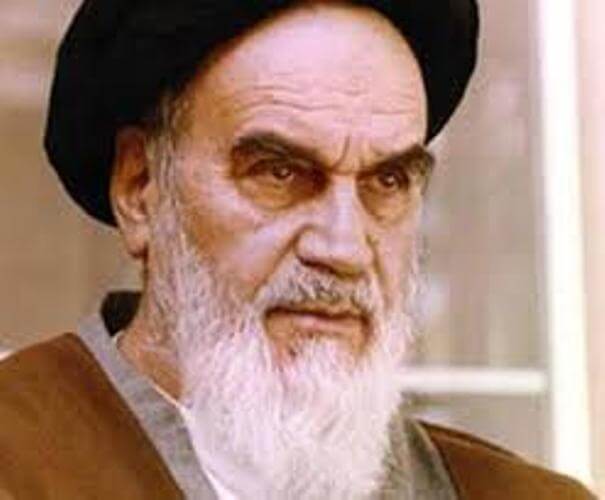
- He was the founder of the Islamic Republic of Iran and the leader of the 1979 Iranian Revolution.
- Khomeini has been described as the “virtual face of Shia Islam in Western popular culture”.
- He considered the United States as the “Great Satan” and the Soviet Union as the “Lesser Satan.”
- Khomeini has been criticized for the human rights violations of Iranians. He ordered the execution of thousands of political prisoners, war criminals and prisoners of the Iran–Iraq War.
- Khomeini was known for his support of the hostage takers during the Iran hostage crisis.
- He had issued a fatwa for the murder of British Indian novelist Salman Rushdie.
Did the revolution promised heaven, but created a hell on earth?
The events of 1979 are still being fought over four decades on.
Views differ on the impact of the revolution. For some, it was the most significant, hopeful and profound event in the entirety of contemporary Islamic history, while others believe that the revolution promised heaven, but created a hell on earth.
- For Washington, the ousting of Shah Mohammad Reza Pahlavi was a geopolitical wound that hasn’t healed. Shah regime helped steer the oil-rich region away from Soviet influence. In its place emerged a hostile power that took U.S. citizens hostage, engaged in deadly attacks on U.S. forces in the region, and styled itself as an anti-imperial “resister” to a hegemonic America.
- For the rest of the Middle East, the arrival of a theocratic regime in Iran was a political bombshell, giving life to religious movements long stifled or overshadowed by the region’s secular, Pan-Arab authoritarians.
- The Iranian revolution played a significant role in the birth and the growth of the jihadist movements in the Arab World, as it raised the awareness of the role of religion in political change in the region.
- The Iranian revolution affected political thinking in the region in terms of introducing religion as a changing tool to fight oppression and corruption.
- Critics of Tehran blame it for all the ills of recent years — the deadly sectarianism inflaming the Middle East, the radicalism fueling its insurgencies etc. Thus Saudi Crown Prince Mohammed bin Salman (MBS) said it was the 1979 Iranian revolution that strengthened religious orthodoxy and extremism in his own country. He argued that his program of changes, which includes a brutal crackdown on dissent, is necessary to unravel that Iranian legacy.
- However MBS’s opponents contend that the kingdom has its own lengthy role in cultivating certain strains of political Islam and he is wrong to advance a new radicalism that, while seemingly more liberal and appealing to the West, is just as intolerant of dissent.
International Impact of the Iranian Revolution
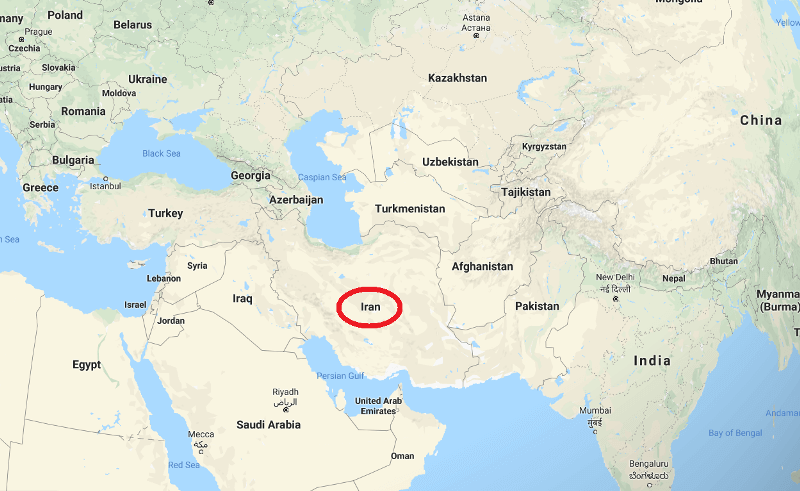
Internationally, the initial impact of the revolution was immense.
- In the non-Muslim world, it changed the image of Islam, generating much interest in Islam – both sympathetic and hostile – and speculation that the revolution might change ‘the world’s balance of power ‘.
- The Islamic Republic positioned itself as a revolutionary beacon under the slogan “neither East nor West, only Islamic Republic (i.e. neither Soviet nor American/West European models), and called for the overthrow of capitalism, American influence, and social injustice in the Middle East and the rest of the world.
- Revolutionary leaders in Iran gave and sought support from non-Muslim causes like IRA in Ireland, anti-apartheid struggle in South Africa etc.
- After the US lost its most formidable ally in the region, it was wary of growing Soviet presence in Afghan. So the US, along with Pakistan, initiated a rebellion against the pro-Soviet government in Afghan. This led to USSR invasion in Afghan in 1979 and the ensuing instability of Afghan.
The Persian Gulf and the Iran–Iraq War
- In its region, Iranian Islamic revolutionaries called for the overthrow of monarchies and their replacement with Islamic republics, much to the alarm of its smaller Sunni-run Arab neighbours Iraq, Saudi Arabia, Kuwait, and the other Persian Gulf States – most of whom were monarchies and all of whom had sizable Shia populations.
- It led to the Iran–Iraq War as Arab Nationalist and Sunni Muslim-dominated regime of Saddam Hussein of Iraq invaded Iran in an attempt to take advantage of revolutionary chaos and destroy the revolution in its infancy.
- The war served as an opportunity for the Iranian government to strengthen revolutionary groups.
- Iranian revolution led Persian Gulf states like Saudi, UAE to support Wahabhism in Afghan. Also, the revolution led to the closeness of the US and Saudi to counter Iran.
- After the Revolution, both Iran and Saudi competed for supremacy of the Muslim world. This led to a cold war between the two. This has also led to a tripartite struggle between Israel-Iran-Saudi, fueled by the Palestinian issue.
Western–Iranian relations
Iran experienced difficult relations with some Western countries, especially the United States after the revolution. Iran was under constant US unilateral sanctions.
The American political scientist Samuel P. Huntington (1992) argued that future wars would be fought not between countries, but between cultures (often based on religious identities). His hypothesis is called the “The Clash of Civilizations“.
India-Iran relations
- Following the 1979 revolution, Iran continued support for Pakistan. India’s close relations with Iraq during the Iran–Iraq War impeded further development of Indo–Iranian ties.
- As Iran was vying for the position of leadership of the Muslim world against Saudi, it supported Pakistan’s claim on Jammu and Kashmir.
- India has always been wary of Iran’s support for Pakistan in the Organisation of Islamic Cooperation (OIC) regarding Kashmir.
- Iranian criticism of India’s position on Kashmir has repeatedly sparked protests within the Indian government against Iranian interference.
- Recently Ayatollah Khomeini – the supreme leader of Iran- equated the Kashmir conflict with those in Yemen and Bahrain, much to the chagrin of India.
- In Afghan, the strategic interests converge, as both are apprehensive of the Taliban.
- In the 1990s, India and Iran supported the Northern Alliance in Afghanistan against the Taliban regime.
- They continued to collaborate in supporting the broad-based anti-Taliban government.
- However, whilst both nations continue to oppose the Taliban, India supports the presence of NATO forces in Afghanistan, unlike Iran.
- As Iran is being isolated internationally after the Revolution, the relationship with India became important for Iran.
Iran and Other countries
- In the Mideast and Muslim world, particularly in its early years, it triggered enormous enthusiasm and redoubled opposition to western intervention and influence.
- Islamist insurgents rose in Saudi Arabia (1979), Egypt (1981), Syria (1982), and Lebanon (1983).
- Although ultimately only the Lebanese Islamists succeeded, other activities have had a more long-term impact.
- However, some observer argues that despite great effort and expense, the only countries that the revolution had a lasting influence are Lebanon and Iraq.
- Moreover, Iran’s pursuit of an ideological rather than a nationalist and pragmatic foreign policy has weakened its potential as a great regional power.
Iran – Current Scenario

Being an Islamic State, Iran has integrated religion into the state. However, there are many who wish to see religion and state as separate. This includes those who are true followers of Islam. They are advocating secularization of the state to preserve the purity of the Islamic faith.
The protests in 2018 in Iran were greatest since 2009 green movement. Many considered this as the manifestation of the anger and frustration felt by Iranian youth against the system.
- Since its inception, the Islamic Republic was dogged by tensions between two concepts of sovereignty — the divine and popular.
- The concept of popular sovereignty in the Constitution mandates popular elections for the presidency and parliament.
- But the concept of divine sovereignty, which is derived from God’s will through the medium of the imam, is bestowed on the existing “faqih” as the rightful ruler of the Shi’ite community.
- However, in the past 40 years in Iran, the idea of the sovereignty of God on Earth has been about the theologization of politics.
- Despite the forceful post-revolutionary imposition of Islamic values and ways of living and the insertion of cultural politics into the everyday lives of young Iranians in the name of Islamic purity, the Iranian youth — especially young women — have not identified with the conservative values of the Islamic regime.
- Moreover, the Republican idea of popular sovereignty has found its place through social networks and is evident in the political activities of Iranian civil society like the women’s rights movements, the students’ movements etc.
- Today, more than 60 per cent of the Iranian population is under the age of 30. Lack of jobs and the absence of social freedoms and everyday opportunities are the principal reasons for their discontent and rebellion.
- In the past 10 years, many protests in Iran — notably the Green Movement of 2009 — were products of the activities of the urban middle-class youth.
- But more recently, the turmoil in Iranian cities has largely been driven by disaffected young people in rural areas and small towns.
- They see it as a chance to express their frustration with the country’s economic problems, which are a fallout of Iran’s financial and military involvement in the conflicts in Syria and Yemen.
- The ideology of the Iranian Revolution has burnt out. Iranian youngsters are disenchanted. The Islamic Reform Movement has failed to fulfil popular demands and spontaneous riots occur in major cities of Iran almost every year.
Iran as a Regional Power
- Post-Revolution, Iran has become a strong regional power having its influence over Iraq, Syria, Lebanon, and Yemen.
- Iran’s involvement in Syria and its alliance with Russia in Syria magnified its regional power status.
- Iran’s support for Iraq’s war against IS has made Iraq politically, militarily, economically, culturally under Iran’s influence.
- To stabilize the region, the cooperation of Iran is needed. Because of this reason, the US under Obama tried to mend peace with Iran. Nuclear Deal was the result of this rapprochement between the US and Iran.
- However, the US under Trump sidelined Iran and sided with Saudi. Trump came out of Nuclear deal and imposed new sanctions on Iran because of its missile tests. The US also imposed immigration curbs on Iranian citizens and branded Iran as ‘greatest sponsor of terrorists’. Thus Trump tried to restore the bipolar balance between Saudi and Israel in the region.
- Meanwhile, Iran stepped up its activities in other countries through Shia Corridor.
Reason for instability in the West Asian region is the cold war between Saudi-Iran, manifested in proxy wars in Syria, Yemen, Bahrain, which is a struggle for power in the garb of religion.
Shia Corridor
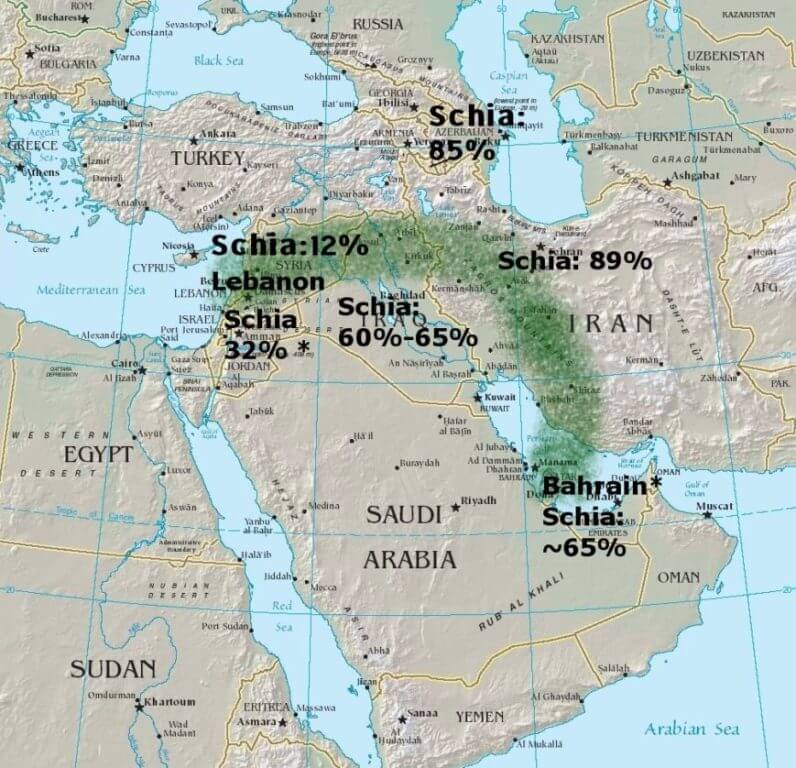
- Shia crescent or Shia Corridor is a term that encompasses Shia areas of the Middle East.
- The argument is that the common religion, that is Shia, gives a potential for cooperation between Iran, Iraq, Syria and the politically powerful Shia militia Hezbollah in Lebanon; and that they would be proxies for Iran in its regional power play.
Conclusion
The criticism that the Iranian revolution promised heaven, but created a hell on earth is not without grounds. Many hoped that Iran as a republic would emerge as a major regional power to counter-balance the global powers. However, in reality, the revolution bolstered Islamic orthodoxy and extremism. Islamic Jihadists and new Islamic States (like the the Islamic State of Iraq and the Levant(ISIS) – even though its ideology is a puritanical form of Sunni Islam) draw inspiration from it.
At this 40th anniversary of the Islamic revolution, the regime is under serious global, regional and domestic pressure. Iran is under pressure with a weak economy and social tensions rising at a time when U.S. President Donald Trump is becoming increasingly hostile towards it. Iran definitely has converted challenges into opportunities and made substantial changes in certain sectors like education, health care etc. But even as the Islamic Republic holds strong, discontent has risen.
The Western world interprets the Iranian Revolution as backward and typically Islamic. Many thinkers feel that the Iranian Revolution made a “clash of civilizations” – between raging Muslims and rational Westerners – inevitable. The consequences of these are manifested today: catastrophically failed wars, and the implosion of large parts of the Middle East, North Africa, and South Asia.
Tehran will have to deal with the U.S.’s unilateral and hostile policies with help from other countries. But it should also fix its system, tackle corruption, hold government departments accountable for the decisions they take and rethink its approach towards dissent and personal freedoms.
At the same time, the US has to understand the peculiar domestic situation of Iran while dealing with it. Moreover, as Fareed Zakaria argues, the US should also take into account Iran’s influence in the region and its geopolitical and geostrategic importance in forging a solution to both Afghan and Syrian instability.
Article by – Sethu Krishnan M
References: Washington Post, Wikipedia, Britannica, Bloomberg, Indian Express, The Hindu






An eye-opening article on the less-known “Iranian revolution” – hats off ClearIAS, for being resourceful! Do continue with such enlightening articles.
Not to satisfy with the arguments that have been given above totally sidelined Iran’s development and changes which are a good example for the other republic Nations +Democratic.
Sir , this type of questions are come in Upsc examination . Is this questions are useful to me ?
Sir books or notes kaise download kare